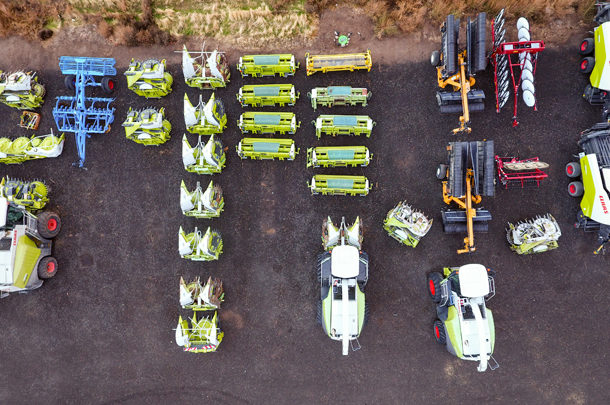As cattle prices have remained under pressure due to growth in beef production, and hay prices and exports haven’t been much better, it may be a good idea to rethink what you really need to purchase to keep the ball rolling for next year.
Ben Eborn, an extension economist at the University of Idaho, says the decision to buy equipment or not is on a lot of producers’ minds this year. Although the decision should always be carefully thought out, this year’s unfavorable profit margins are making the decision even more critical.
So, whether you’re questioning the reliability of your current equipment, have an increased need for capacity, want to add the latest technology or simply have a bad case of “new paint” syndrome, Eborn suggests postponing purchases unless absolutely necessary.
“I would hesitate as a farmer to tie up my ability to obtain capital right now,” Eborn says. “If you can squeak by with using your equipment for another year or two, it may help you weather the storm. You only have the ability as a business to borrow so much capital, so you might want to save it for operating expenses or other investments that don’t depreciate like a piece of equipment – at least for a year or two.”
While waiting that “year or two” may be ideal, Eborn and William Edwards, a recently retired economist at Iowa State University, recognize that may not be an option for everyone. So, for those of you who can’t wait another season and can’t pay in cash, they have outlined five alternatives to borrowing money.
1. Buy used equipment
Consider trading for used machinery instead of new machinery, says Eborn and Edwards. When prices were high, a lot of machinery was traded in, some of it fairly new. With the surplus of inventory on many lots right now, both experts suggest that dealers may be willing to negotiate some deals for people who can pay cash or want to take advantage of dealer financing.
2. Lease
A lot of times you can lease equipment for three to five years, and those payments tend to be less than the loan payments used to buy the same machine, Edwards says. He suggests that for those who are in a situation where they need to trade machinery, but cash flow is tight, to look into leasing instead.
“The only downside of leasing is that you don’t build up any equity in the machine,” Edwards says. “Once the lease is up, you return the machine and you don’t really have anything. It’s more of a strategy to stretch cash flow in the short run. It’s not necessarily the least cost strategy for the long run.”
3. Trade unneeded equipment
Another option to obtaining equipment could be to trade in any unneeded equipment to help assist with the purchase. Both experts suggest looking around and determining whether there is another piece of equipment that isn’t needed. Although it may feel like you are doing yourself a favor by keeping it, Edwards says holding that piece of equipment as a backup can become an expensive strategy.
4. Finance through a dealer
Oftentimes, there are installment contracts or dealer financing options available. In some years – maybe even this year – financing through a dealer may be more favorable than going to a third-party lender, Edwards says. He suggests shopping around for credit beforehand to see who offers the best terms.
5. Custom hire
According to both Eborn and Edwards, custom hiring is typically a better alternative to investing in the equipment yourself. It’s often a question of whether or not you can justify owning your own equipment or whether it’s cheaper to hire someone else to do it.
Although availability of the equipment when you want and need it is often a concern, Edwards points out that technology has made this option better than ever before. He says, “Most operators have websites, and it’s easier to do some searching and see what’s available than it used to be. Do your homework and see if this would be a better option for you.”
Summary
Unlike the last few years, people most likely won’t be purchasing equipment as a way to avoid paying taxes, Eborn says. If you’re considering purchasing equipment, for any reason, you should ask yourself these questions: Do I absolutely need it right now? Can I postpone it one more season? Do I really need a brand-new one? Or can I do better by getting a used one?
As a reminder, Eborn says, “Equipment costs are one of the major expenses for crop and livestock production. You’ve got to be as careful as you can to keep those costs in check, especially in the down times.” ![]()

-
Cassidy Woolsey
- Editor
- Progressive Forage
- Email Cassidy Woolsey
PHOTO: Experts suggest looking at alternative ways to purchase equipment and recommend taking advantage of the amount of used inventory on many dealers’ lots. Staff photo.











